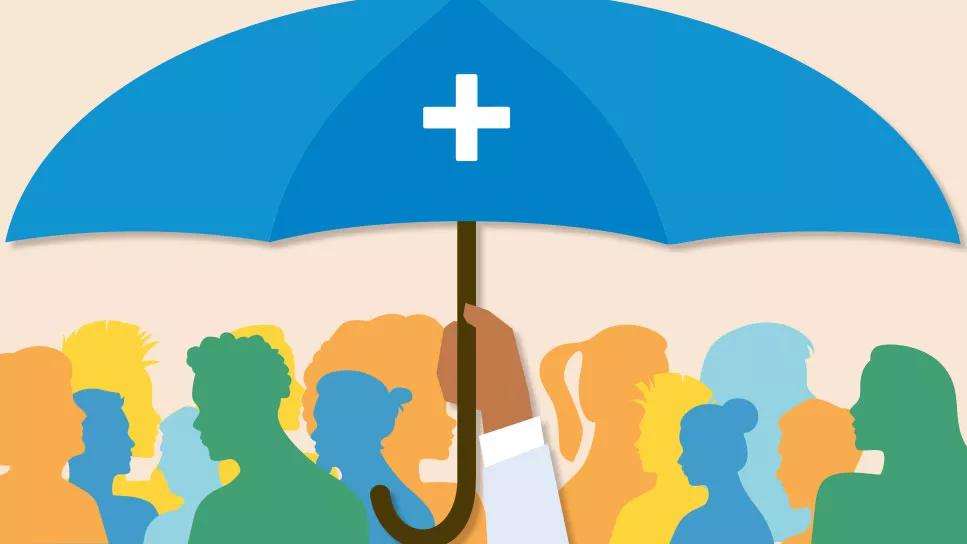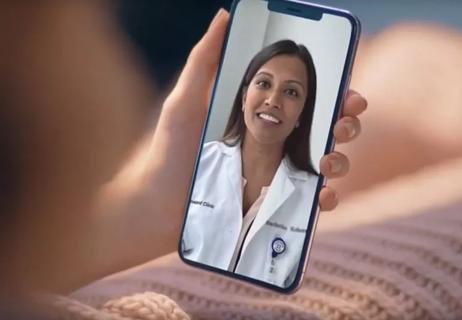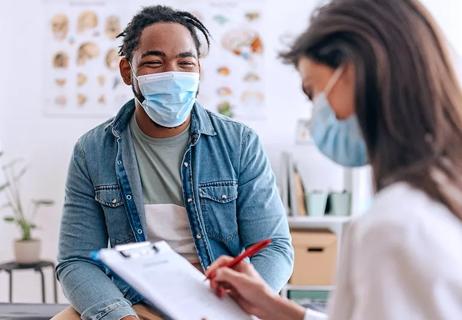Inequality hurts our health at a personal, community and global level

Black infants are 2.4 times more likely to die than babies of other races.
Advertisement
Cleveland Clinic is a non-profit academic medical center. Advertising on our site helps support our mission. We do not endorse non-Cleveland Clinic products or services. Policy
More people in the southern U.S. say they live with a disability than anywhere else in the country.
A study from The Trevor Project found that 56% of young people who identify as LGBTQ who wanted mental healthcare in the past year weren’t able to get it.
People who are Hispanic or Latino experience more severe diabetes complications (including higher rates of kidney failure and vision loss) than non-Hispanic white people.
Level of education — at both the individual and community level — has been shown to correlate strongly with COVID-19 death rates.
These health statistics may feel abstract, but each and every one of them reflects the real lives — and, in too many cases, deaths — of real people. Health disparities impact all of us in one way or another, directly or indirectly, whether we realize it or not.
According to the U.S. Office of Disease Prevention and Health Promotion (ODPHP), a health disparity is “a particular type of health difference that is closely linked with social, economic, and/or environmental disadvantage.” The fact that we don’t all have the same resources and opportunities to be healthy leads to a lot of unnecessary illnesses and health challenges.
Advocates for health equity say it doesn’t have to be that way. Psychologist Kia-Rai Prewitt, PhD, explains what health equity is, why it matters and what small, but meaningful actions you can take in your daily life to be part of the solution.
Advertisement
The U.S. Centers for Disease Prevention and Control (CDC) defines health equity as “the state in which everyone has a fair and just opportunity to attain their highest level of health. Achieving this requires focused and ongoing societal efforts to address historical and contemporary injustices; overcome economic, social, and other obstacles to health and healthcare; and eliminate preventable health disparities.”
It’s a lofty goal, expressed in lofty language. Dr. Prewitt offers a more straightforward explanation: “It’s about having access to the best healthcare — the opportunity for the best health outcomes — no matter what your background is, no matter your socioeconomic status, race, gender, etcetera.”
To understand what health equity is, we have to get our arms around the problem it solves.
Dr. Prewitt describes social determinants of health (SDOH) as the personal, social and environmental circumstances that shape our health and well-being. Let’s dive into the specifics.
The U.S. Department of Health and Human Services (HHS) lists the following conditions as social determinants of health:
Let’s put these broad categories into a real-life context.
Being seriously injured in a car accident is never good. It has the potential to change your life and health forever, no matter who you are. But two people experiencing the exact same accident — and the exact same injuries — can have drastically different health outcomes based on SDOH:
Education access and quality: Let’s set aside for a minute that age, educational attainment and driver’s ed participation all impact your likelihood of dying in a road traffic accident. Instead, let’s focus on the people around you. How likely is it that bystanders will have the knowledge and skill to give effective first aid? How likely are they to call 911? How well-trained are the emergency response workers? Have they been trained to recognize the role implicit bias can play in the quality of their treatment?
Neighborhood and built environment: How far away is the nearest hospital? What about the nearest level-one trauma center? How well maintained are the roads? How congested are they?
Healthcare access and quality: How well-staffed is the hospital, and how busy is it? Do you have a primary care provider who the hospital can contact to get your complete medical history? Do you have health insurance, Medicare or Medicaid, or will you be paying your medical bills out of pocket? Do you speak the same language as your healthcare providers? If not, how fast can they get a translator for you?
Advertisement
Economic stability: Do you have reliable access to healthy food and a safe place to sleep? Will you be able to keep your current job if you’re no longer able to lift heavy objects, walk short distances or stand for long periods of time? Can you afford to take time off from work for rehab and physical therapy appointments?
Social and community context: Do you have friends or family members who could serve as caregivers — for you and your dependents — for weeks or months at a time? Do you feel safe and supported, both at home and in your neighborhood? Do you have a faith community, support group or mental health professional you can talk to about the trauma you’ve endured? Do you have supportive coworkers who will pick up the slack at work while you recover?
As you can see, social determinants of health can impact the resources available to you from start to finish, which plays a huge role in your survival and recovery. But you don’t have to have a life-changing medical emergency to be affected by healthcare disparities.
Living with health inequity has a wide range of consequences. People who are marginalized by society (or who come from disadvantaged communities) tend to have more chronic diseases and poorer health outcomes. That’s bad enough, but the downstream effects make the situation far worse.
Advertisement
“There are a lot of communities that aren't coming into our healthcare systems for fear of bias, stigma or poor treatment,” Dr. Prewitt says. This can allow a health condition to worsen. And when it gets bad enough, people without good access to healthcare end up having to go to the emergency room.
“We know emergency rooms can be very busy,” Dr. Prewitt continues. “They’re also going to take the patients with the most concerning problems first — or what they see as the most immediate concerns. People from marginalized populations, people of color, people with a low socioeconomic status — they’ve been systemically treated differently in healthcare, due to both conscious and unconscious bias.”
An ER is already chaotic, and that can feel uncomfortable enough. It’d feel far worse if you believed — correctly or incorrectly — that you were being treated differently, or like you didn’t matter to the doctors or other caregivers. That experience could easily lead you to avoid seeking care in the future, which will only make your health worse, and further perpetuate the vicious cycle of injustice.
Health equity — putting a stop to health disparities and leveling the playing field — would undeniably make the world a better place. But achieving true health equity would require that we make changes to every level of healthcare and every part of society. And we’d have to do it on a global scale. What good can one person do in the face of a problem that complex?
Advertisement
“It can definitely be overwhelming,” Dr. Prewitt concedes. But that doesn’t mean you can’t make small, meaningful contributions to the cause.
“One of the things that immediately comes to mind is getting in touch with local legislators to discuss your concerns about access to healthcare,” Dr. Prewitt suggests. “And I know that it might seem a little scary — that you might feel like you don’t know what to say. But if you aren’t getting the care you need, or your community is being underserved, it’s good to speak up.”
Speaking up doesn’t have to happen face-to-face. You can always make a phone call, sign a petition, write a letter, send an email or attend a community forum. Do what makes you comfortable.
If you’re feeling anxious about sharing your opinions, remember: When it comes to your and your communities’ experiences with healthcare inequality, you’re the expert. And listening to your thoughts, concerns and ideas is your elected officials’ job! Even if they disagree with you, your insight will give them valuable insight into what’s happening in the community they serve.
“Let them know there aren’t enough resources, or that a lot of you are having a hard time seeing people for primary care because it’s far away or unaffordable,” Dr. Prewitt urges.
If that kind of advocacy work isn’t your style, Dr. Prewitt notes that there are lots of ways to make your voice heard. There are lots of social institutions that fight structural injustice, from faith-based groups and community centers to political parties, volunteer opportunities and nonprofit organizations.
“Those are good ways to bring collective voices together, to advocate for change in these larger systems,” she says. “Get other people on board, so you’re not alone.”
And don’t forget: There are lots of healthcare professionals out there who — like Dr. Prewitt — want to turn health equity from a dream into a reality. They can also be powerful partners in your efforts to improve healthcare access in your community.
Trying to change healthcare for the better is an admirable goal, but it’s also a lot to take on. Sometimes, we’re forced to focus on ourselves, and on the present. Sometimes, change starts at home. That’s what happened to tennis champion Serena Williams in 2017.
After giving birth to her first child, Williams began experiencing frighteningly familiar symptoms. She’d nearly died of a pulmonary embolism six years earlier, and realized the same thing was happening again.
In a 2022 essay for Elle magazine, she recounted how her providers ignored her repeated requests for help. They dismissed her, telling her she was just exhausted from giving birth, that the medication was making her “talk crazy.” They ignored her concerns despite her knowing exactly what tests and medications she needed. Despite her being one of the most accomplished athletes in recorded history — an achievement that required a keen understanding of her body. Despite her having a history of life-threatening blood clots. Despite her being rich and famous. Luckily, she kept pushing until her healthcare team did what she asked. If she hadn’t, she wouldn’t have survived.
Serena Williams nearly became a statistic.
“In the U.S., Black women are nearly three times more likely to die during or after childbirth than their white counterparts,” she wrote. “Many of these deaths are considered by experts to be preventable. Being heard and appropriately treated was the difference between life or death for me.”
Being able to advocate for yourself in healthcare settings is vitally important, but how do you do it?
Whenever possible, Dr. Prewitt recommends that a friend or close family member accompany you to your medical appointments and vice versa. It’s especially important in an emergency or when your health condition may make it hard to think clearly.
“Having another person there that can help you advocate for yourself is important,” Dr. Prewitt emphasizes, “but if you don't have anybody else there, ask for a second opinion or to speak to whoever the department head is or to whoever’s managing the floor. You can also ask to speak to an ombudsman.” An ombudsman is someone whose job is to investigate complaints and help solve conflicts between patients and healthcare providers.
“Let it be known that you don’t feel like you’re being treated fairly,” Dr. Prewitt stresses. It’s not an easy thing to do, but speaking up may just save your life.
Learn more about our editorial process.
Advertisement

Current changes help & protect; despite frustration

The best way to figure out which kind you need is to first speak with your primary care provider

Prevention is key to making sure everyone in your community can get the care they need

Bleeding is a risk and warrants taking care, but the reward of this lifesaving medication is great

Severe and debilitating headaches can affect the quality of your child’s life

Type 2 diabetes isn’t inevitable with these dietary changes

Applying a hot or cold compress can help with pain